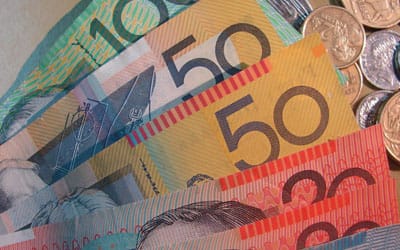– Average earnings in the UK, excluding bonuses, grew at 7.2% over the 12 months to April while the unemployment rate fell to 3.8%.

– The boost in wages risks adding to inflationary fires and shores up expectations that the Bank of England will have to keep raising interest rates.
– The pound has risen against the dollar as the BofE and the Fed are set to move on different paths.
– The Nasdaq and the S&P reach highest level in a year as big tech barrels higher.
– China’s central bank grapples with disinflationary forces and reduces a key lending rate to try and boost lending to increase demand.
By Susannah Streeter, head of money and markets, Hargreaves Lansdown.
Higher than-expected wage growth will help households struggling with the cost-of-living crisis but the latest labour market trends risk adding fuel to inflationary fires and are set to make the Bank of England more determined to raise interest rates to put out the flames. The increases to minimum wage levels, up almost 10% partly account for the rise, and while hugely welcome for those on low incomes, it comes at a hugely tricky time when policymakers want to see spending power reduced, not bolstered, to help bring down the rate of price increases. The pound rose against the dollar on the news heading further towards the $1.26 mark, amid expectations that the Bank of England will keep pushing rates up, while in the United States, the Federal Reserve is poised to press pause tomorrow.
The might of big tech is barreling Wall Street higher amid the expectation that the Federal Reserve will sit on its hands and keep interest rates on hold tomorrow. With a pause pretty much considered bolted on, the latest inflation reading for the US out today will be closely watched for clues about the Fed’s next move, with some speculation that a hike might still follow a June pause. Consumer near-term inflation expectations, however, are at the lowest level in two years, as their worries about difficulties in obtaining credit rise. This extra wariness among US consumers will strike a discordant note for companies relying on discretionary spending but is more music to the ears of Fed policymakers who are still worried about the risks of inflation becoming embedded in the economy.
China’s central bank is grappling with an opposite problem – disinflationary forces – and it’s acting to try and bolster demand. China’s latest stimulus measures are aimed at reducing borrowing costs and adding liquidity to an economy which has stumbled in its recovery. The People’s Bank of China’s move to cut its 7-day reverse repurchase rate by 0.1% to 1.9% comes amid data indicating that consumer price growth is losing steam faster than expected and producer prices are going further into reverse as demand drops off. While the move by the central bank has helped lift sentiment a little, helping the oil price reverse its fall, with consumers and businesses under pressure in China’s key export markets it may have short-lived benefits.
Tradersdna is a leading digital and social media platform for traders and investors. Tradersdna offers premiere resources for trading and investing education, digital resources for personal finance, market analysis and free trading guides. More about TradersDNA Features: What Does It Take to Become an Aggressive Trader? | Everything You Need to Know About White Label Trading Software | Advantages of Automated Forex Trading

































